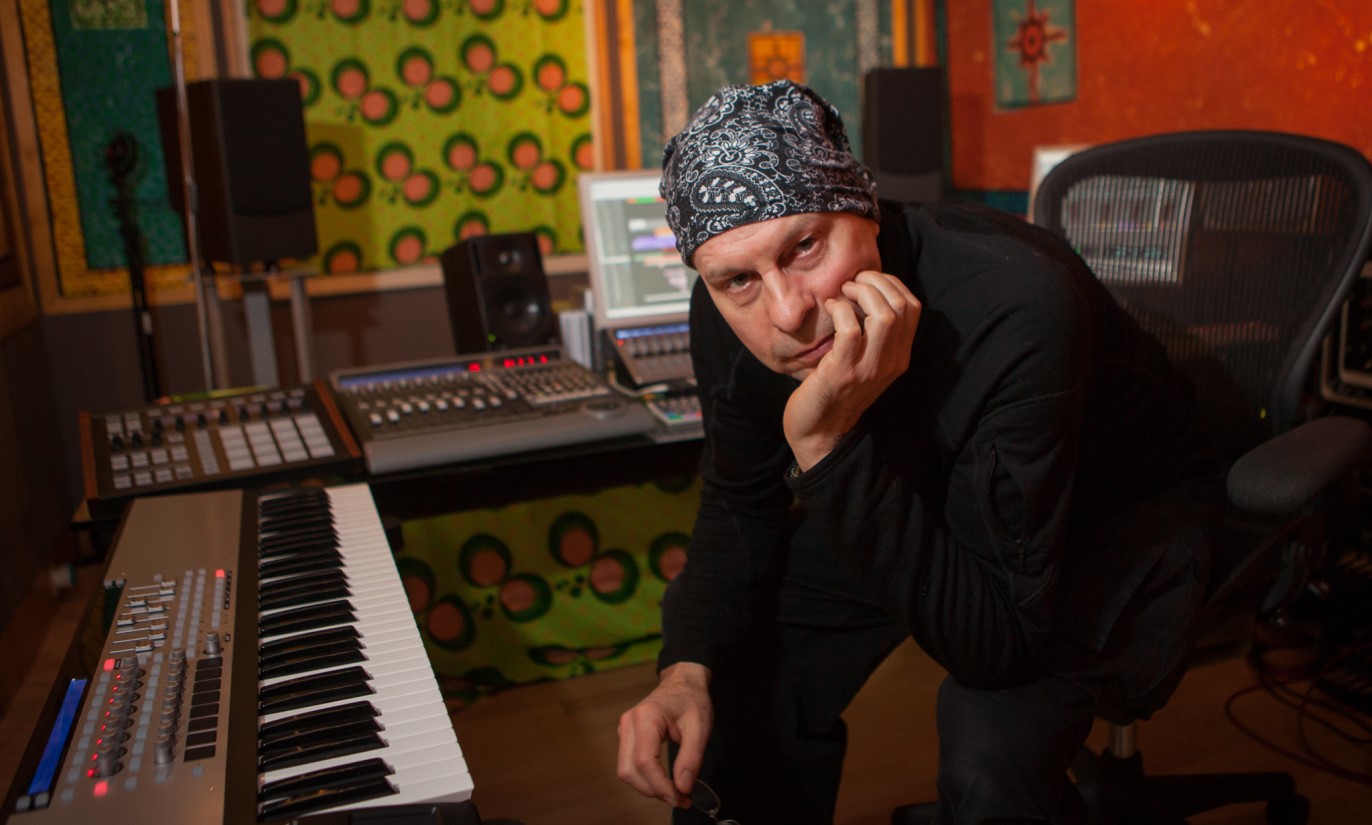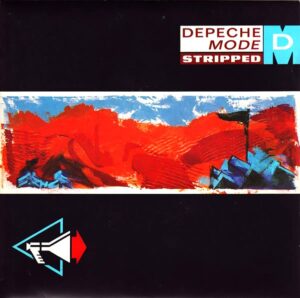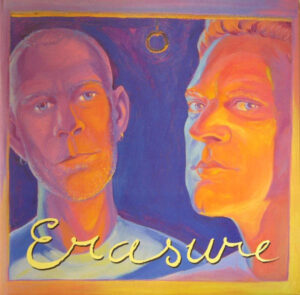An Englishman In Berlin, in 2015, a fascinating and enjoyable documentary with the life of Mark Reeder acting as its narrative, ‘B-Movie: Lust & Sound In West Berlin 1979 – 1989’ captured the music, art and chaos of the divided city before its infamous wall came down.
Manchester-born Mark Reeder was friends with Mick Hucknall and Ian Curtis but became fascinated by German electronic music, leading to him to venture into die Bundesrepublik in search of records he couldn’t get back home. Curiosity led him to hitchhike to West Berlin and fascinated by the characters he encountered, he stayed.
West Berlin became the creative melting pot for sub- and pop-culture. Before the iron curtain fell, everything and anything seemed possible. Using a fast-paced collage of mostly unreleased film and TV footage from a frenzied but creative decade, starting with punk and ending with the Love Parade, life in in der Mauerstadt where neat the days were short and the nights were endless as its residents lived for the moment.
‘B-Movie: Lust & Sound in West-Berlin 1979-1989’ was accompanied by a fitting soundtrack and this ‘B-Music’ is now reissued by Edel Motion as a pink + yellow vinyl double LP; to coincide with this tenth anniversary release, Mark Reeder looked back with ELECTRICITYCLUB.CO.UK at ‘B-Movie: Lust & Sound In West Berlin 1979 – 1989’…
As it goes into its tenth year since its release, ‘B-Movie’ still endures, why do you think that is?
I think it is simply because the film never really ages. The images you see on screen, are already old, having been filmed in West-Berlin of the 1980s. It also reaches a very wide audience too, not only nostalgic pensioners who can remember living through those times, but the fact that it resonates with younger, and contemporary audiences too. People who are captivated by its imagery, humour and positive message.
I tried to present an inspiring message of hope, to show people that regardless of the difficulties we endured, we were able to remain creative in the face of adversity.
In hindsight, would you like to have done anything different with ‘B-Movie’?’
Not really. At first, I was frustrated that we couldn’t release the film internationally, as I wanted everyone to see it, but meanwhile I believe the fact that it isn’t available everywhere at the touch of a button, makes it more desirable, and has given it even more meaning. It’s something to discover, to tell your friends and you have to search for it.
The only thing I wish Edel would have done, was to release the 5.1 surround versions of all the songs as isolated tracks on the Blu-Ray/DVD. They could have branched the tracks, so that you got to hear the full song in stereo or 5.1 surround. You honestly can’t imagine how impressive EINSTÜRZENDE NEUBAUTEN, MALARIA! or JOY DIVISION sound in full surround. You only get a small taste from the film.
The film has only had a limited broadcast on TV arts channels, has that been intentional?
No, that wasn’t intentional, as such, it just wasn’t considered by the producers. This has resulted in the film not being available on TV Networks outside of Germany, and the film has never been screened in the UK on TV.
The producers initially thought that the films specific subject was really only going to be interesting for a limited German audience, and so they only cleared the music rights for Germany, film festivals and special events, such as the UK tour put together by the ‘Sound of Free Speech’ film director Brandon Spivey and Tim Burge (of Mercury Machine) which was hosted by the Goethe Institut.
You’ve toured the world with showings of ‘B-Movie’, which places do you remember you received the most interesting and maybe surprising reactions from?
There have been quite a few. The screening in Taipei, Taiwan for Living Green was very impressive. Jesse Chen and Sebastian Wu made a beautiful exhibition of my photos in a former (Japanese) Police Station and screened the film over a week. They also designed an impressive brochure for it, that looked like an East German Passport. Another impressive screening was at the DMZ film festival on the border between North and South Korea, where they projected ‘B-Movie’ on the side of a huge apartment block every night, for five nights.
Also, the two-month Goethe Institute sponsored tour of China was also very impressive, as we never screened it in cinemas there, only in locations that were either clubs or live venues. I also screened ‘B-Movie’ in Moscow in December 2019 in the city’s biggest Soviet era cinema, which I think was full of Navalny supporters. They too had made an exhibition in an arts school, whereby they had recreated my old Berlin apartment for my photo exhibition. I was told by the Russian viewers that ‘B-Movie’ is inspiring to them because it is not the usual PR documentary film about an artist’s success, riches and fame. It is a true story, about failure and survival.
‘B-Movie’ continues to be used as the video backdrop for whenever NEW ORDER perform ‘Singularity’ live, how did that come about originally?
After Bernard Sumner came to the first UK screening at Home in Manchester, he was very impressed by the footage and feeling of the film, and he asked me if NEW ORDER could use it for their video to ‘Singularity’. Bernard often came to visit me Berlin in the 1980s and he said he could really identify with the images and atmosphere he saw on the screen, which he thought complimented the subject of the song.
NEW ORDER’s video is a three-minute edit of the film, and in most cases, it’s the first and only introduction most people have to ‘B-Movie’. In return, it has not only promoted their song, but also the film, and as an added bonus I got to remix ‘Singularity’ too.
The double vinyl of the soundtrack gets a reissue and features about half of the material that was included on the double CD version, how did you go about deciding what went on?
That was a very difficult choice between the film’s director Klaus Maeck and myself, and it was really only determined in the end by who would give us the compilation rights. For example, I really wanted my special reworking of EINSTÜRZENDE NEUBAUTEN on the compilation, but for internal and personal reasons, they didn’t wish to be included, which we had to respect.
Others wanted too much money, so they were automatically excluded. In the end though, I think we found a nice balance of indie artists from the period mixed with a few hits, and more established artists. Yes, to commemorate the film’s tenth anniversary in 2025, Edel have decided to re-release the soundtrack just in time for Christmas on pink and yellow vinyl. This is to make up the colours of the cover, which in turn is a stylistic representation of the German flag.
Can you remember your first reaction when you heard ‘Komakino’ by JOY DIVISION which was inspired by the band’s experience of the Kant-Kino gig you put on?
I can remember Rob Gretton telling me that the band had recorded a song about their experience in Berlin, and that it was being released as a free flexi-disc. I was very excited. He sent me a huge box, from which I took piles of singles to all the West-Berlin record shops, for them to give away. I think most probably ended up in the bin.
The sound of the flexi was pretty dreadful to be honest, and it sounded like someone was sweeping the studio floor with a stiff brush while they were making it. It didn’t really do the band much good. The track had only ever been a demo mix by Martin Hannett, but Tony and Rob thought it would be a good way to promote the band further and fill a space while they were finishing ‘Closer’. After the release of the album, it was apparent that the song was very different to all the other tracks on ‘Closer’ and it didn’t really fit in. It remains a stand-alone.
When it came to making the soundtrack for ‘B-Movie’, I wanted to revisit this song and rework it so that it would sound good in the cinema. It was a daunting task. Thankfully I had an unmastered version to use as a basis, but it still took my studio partner Micha Adam and I about three months to deconstruct it and then reconstruct it in 5.1 surround sound and stereo. Therefore, the version you hear on the ‘B-Movie’ Soundtrack is exclusive to the film and this soundtrack album.
‘You Need The Drugs’ is the recurring track in the film and is a bonafide classic, but was it obvious early on that it would be the signature tune of the film?
Yes actually, I think the moment we heard the demo, we were all in agreement that the song should be the film’s theme tune. I initially wanted to write something, but when Westbam proposed the song, and I DJ’d it at a party, I realised this was definitely it.
Richard Butler’s vocals were so perfect and they reflected the subject of the movie so well. When we got the vocal files, we realised Richard had recorded about 6 proper versions in the studio, but none of them sounded as rough as his original early morning demo version, which he had just sung into his laptop. We used that vocal. We also made a special 5.1 surround version for the film, which is a slightly different mix to Westbam’s original album version.
There are so many highlights but if you had to pick one scene or moment, what would it be?
My favourite scene is probably MALARIA! performing ‘Kaltes Klares Wasser’.
MALARIA! feature on the album, what is your favourite memory of them and their music?
Oh, that is a hard one. I am still friends with the girls and I have many fond memories from the time they were an active band up to today. Together with Elisabeth Recker who started the Monogam record label, Gudrun and Bettina were the driving force in my opinion of the whole avant-garde scene in Berlin. They had a definitive agenda and idea of what they wanted to do and sound.
They made no compromises. That was very inspiring to me. I loved the fact they discarded all the rules of rock & roll and made it up themselves. Their music is an enduring testimony to that attitude. When I think about it though, my favourite tour was when we went to Italy. Although the gigs weren’t particularly successful, the experience was enlightening.
Do you have any favourite tracks on the double vinyl soundtrack?
My favourite track is… I have no idea. It works as a listen through album. Almost all the tracks featured on the soundtrack album are special versions which Micha Adam and I created for the film. They are exclusive to ‘B-Movie’.
You wanted ‘Heroes’ on the original soundtrack but licensing proved prohibitive, were there any other tracks you would have to have included?
The producer originally wanted ‘Heroes’ as the intro to ‘B-Movie’, and I suggested we use the German version ‘Helden’, but that never happened due to publishing rights and budget issues, and so we used ‘Holidays in the Sun’ instead, as that was also a very inspirational track for me at the time. I also wanted to use ‘Nothing To Do’ by V2, as they were also friends and one of the first Manchester punk bands after Buzzcocks. It is a great song that summed up life in Manchester during the late 70s, but unfortunately, it never made it into the final film version. Another song we couldn’t get clearance for was the original version of ‘Kebabträume’ by DAF, we wanted that too. So, I ended up making my own homage with my track, ‘Mauerstadt’.
While there is a darkness to ‘B-Movie’, it is positive in its possibilities… with the world in the situation it is at the moment and elements of deja vu, we know the fears but what are the hopes for the future in your view?
Since ‘B-Movie’ was first released in 2015, I have had a lot of young people coming to me and saying that they wished that they had lived through these times. The images are somehow so romantic and exciting. The time appears to be creative and inspiring. It wasn’t easy to survive back then. Well, I feel we are back where we started.
In the 1980s, backwater West-Berlin was full of draft dodgers and artistic refugees, all fleeing from the restricting lifestyles of West Germany. It was full of all those people that didn’t fit into what was perceived as normal West German society. No one really had any money, but it was thrilling. We struggled to do the things we wanted and yet in retrospect, we achieved so much through our creative thinking.
The Cold War hung over the city like a shroud. The threat of confrontation and nuclear holocaust was literally something that could happen just down the walled-off road. It gave Berlin a subliminally tense ambience. Everyone seemed to live their lives as if it was their last day on Earth.
It could be all over tomorrow, so let’s do it now, while we are still here – was the general attitude. Meanwhile, Berlin has become an international city. The draft dodgers and misfits come not from West-Germany, but from all over the World. The cold-war threat of nuclear holocaust is back too and that could kick off a little further down the road.
Life is like a living in a thriller again. I look at the present, and think we have a very similar situation to the 80s. So now it is time for younger people to grasp the moment and be creative within the confines of the situation. Use the time. I believe that the uncertainly of the situation will bring with it new music and new artists, all wanting to express themselves. Hopefully many will be inspired by B-Movie to understand that whatever they are dreaming about, it is possible.
You just can’t wait for someone else to do it, you have to do it yourself, and do it now.
ELECTRICITYCLUB.CO.UK gives its warmest thanks to Mark Reeder
The soundtrack ‘B-Music (Lust & Sound in West-Berlin)’ is reissued by Edel Motion as a pink + yellow vinyl double LP, available now direct from https://www.amazon.de/-/en/B-Music-Soundtrack-Z-Film-B-Movie-Colored/dp/B0DJB54Q6X/
https://www.facebook.com/markreedermusic/
https://twitter.com/markreedermfs
https://www.instagram.com/markreeder.mfs/
Text and Interview by Chi Ming Lai
7th December 2024





























Follow Us!